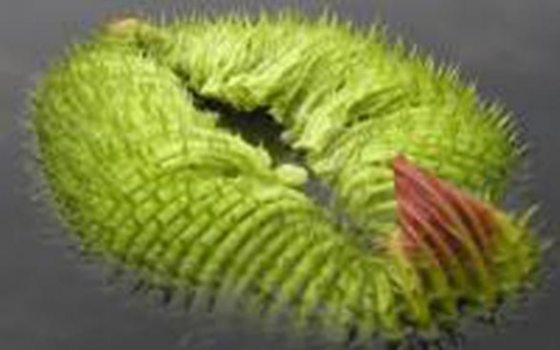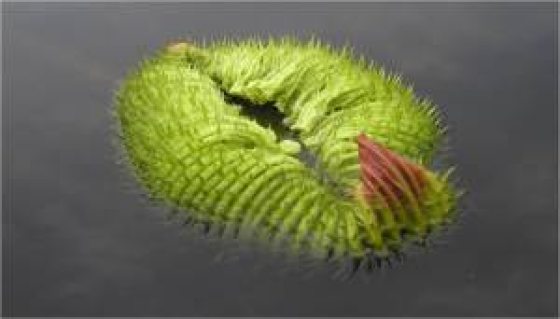
Today I would like to bring you up to date on one of the signature plants of our display, Victoria, commonly referred to as the Giant Water Platter. Few plants have the ability to captivate an audience like this plant. We begin in mid-January with the sowing of seeds. As you can see the seeds are about the size of garden pea.
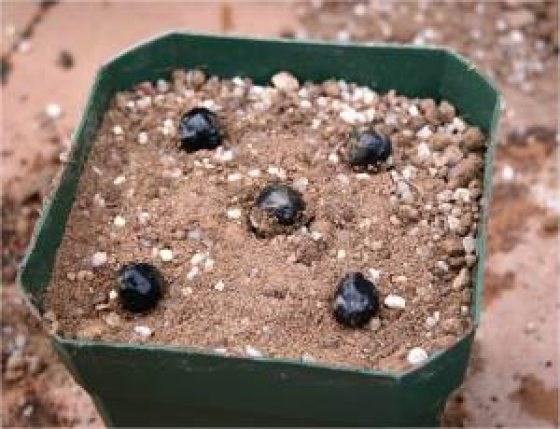
We start by sowing 5-10 seeds in a community pot, planting them approx. 1.5 times as deep as the diameter of the seed. This should sound familiar as it is a general rule of thumb for sowing most seed. The soil we use is harvested directly from our field and tends to be on the clay side of the soil spectrum,. This is ideal for most aquatic plants. To this we add a coarse granite grit at approx. a 5:1 ratio of soil to grit. Because the seed has its own food reserves, often referred to as endosperm, we do not add additional fertilizer to the soil at his stage.The seeds are then placed in tanks of water heated to 80F to await germination. We grow three types of Water Platters, Victoria cruziana, Victoria amazonica and a hybrid between these called Victoria x 'Longwood Hybrid', which was first developed by Longwood in 1960.
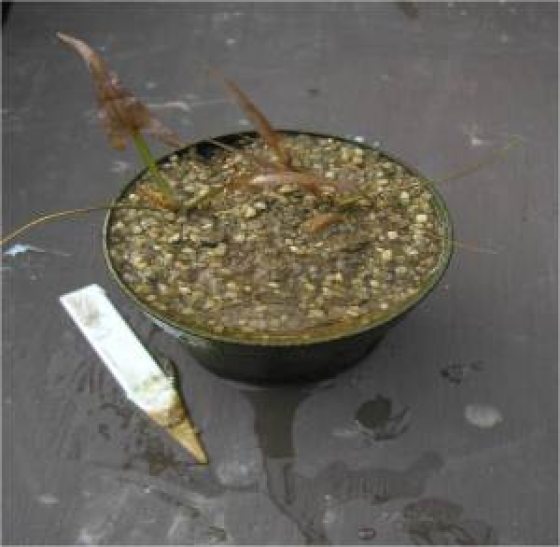
Germination characteristics vary between them. The Longwood Hybrid has the highest germination percentage at around 80%. The other two species are considerably lower and more sporadic in their germination rates, at 20-30% on average. The first leaf to emerge is filformis, or thread-like, in shape. It is quickly followed by a deltoid or triangular shaped leaf.
- It is not until the third leaf that we begin to see the resemblance to a platter. Once we have 1-2 of these floating leaves you can begin to separate and transplant the seedlings into individual pots. At this point fertilizer can be added to soil mix at approximately 1/4 strength.
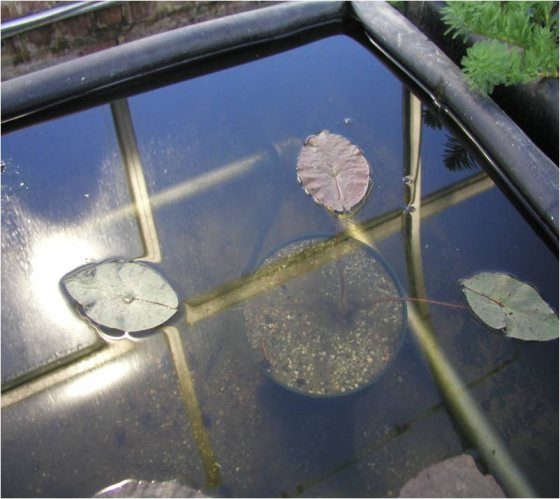
From this point on we watch the growth and re-pot as needed, keeping the plants from becoming root bound. Other activities that are well under way by this time of year include the sowing of tropical waterlily tubers--we have also just finished dividing most of our marginal plants and are beginning to finalize the planting plans for the pools and marginal beds. So as you can see, the winter months may not seem like an active time from a gardening stand point--but for us it is probably the most crucial time of the year. Look forward to talking with you soon.
